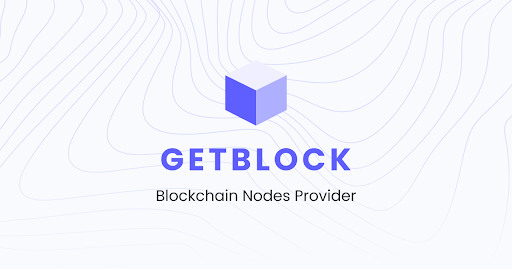Despite Web2 and even FCMG brands are also using ‘community first’ motto here and there, it is crypto and blockchain where communities a) have a say in many crucial technical decisions; b) necessary for sustainable progress and brand visibility, and c) can benefit from being active when it comes to protocols’ economical designs.
From the very beginning: How cypherpunks invented and promoted Bitcoin
Community-based practices had been crucial for cryptocurrencies even before the word ‘cryptocurrency’ itself was invented by Forbes staff reporters in 2011. Mysterious anonymous creator of Bitcoin, Satoshi Nakamoto, didn’t introduce his brainchild at a conference or during a YouTube stream.
Instead, he shared a whitepaper for digital gold (Bitcoin: A Peer-to-Peer Electronic Cash System) with the subscribers of cypherpunks’ listserv. It was a closed group of cryptography and applied math enthusiasts. Adam Back, inventor of Hashcash protocol, video games developer Hal Finney and anonymous ‘e-money’ creator Wei Dai are the most well-known of them.
It was Hal Finney who received the first Bitcoin transaction. In 2009-2010, these cypherpunks were the only people contacted directly by Satoshi Nakamoto. He had approved one of them, Gavin Andresen, as the first non-anonymous Bitcoin lead maintainer - and then left the community for good.
undefinedIconic Tweet: Hal Finney started running first-ever Bitcoin node
The Bitcoin (BTC) community played a significant role in ‘block size wars’, in the creation of the earliest Bitcoin forks, in the implementation of its first scalability solution Lightning Network, and so on. Thus, it is the textbook example of how one passionate community of enthusiasts can supercharge the emerging technology and make it mainstream.
‘Ethereum effect’: Magic power of ‘ultrasound money’ enthusiasts
Ethereum, a second cryptocurrency, and a pioneering smart contracts platform, was a community-driven project from the very beginning.
Supported by Ethereum Foundation, the ecosystem of Ethereum (ETH) enthusiasts created a heterogeneous layer of infrastructure: from Ethereum (ETH) node clients and miners software to sophisticated decentralized finances (DeFi) protocols and staking dashboards.
At the same time, the Ethereum community failed to find consensus about the scaling process. The network was forked; ‘dissidents’ created what we know as Ethereum right now while ‘old-believers’ decided to maintain the initial version of Ethereum (ETH) consensus known as Ethereum Classic (ETC).
Since 2017, Ethereum community participants have proposed and developed multiple second-layer scalability solutions for this smart contracts platform. Ethereum (ETH) went through an ICO euphoria of 2017-2018, Crypto Winter and DeFi Summer of 2020.

Since 2015, Ethereum has never lost its dominance in DeFi segment
Today, in Q2, 2022, Ethereum (sensationally!) remains the dominant smart contracts platforms for dApps and DeFis despite all its scalability and cost-efficiency drawbacks. Analysts and researchers attribute this supremacy to an ‘Ethereum effect’. It means that due to well-designed detailed documentation, large number of proponents, and (again) passionate and vibrant community, Ethereum is the most attractive platform for an average new dApp developer.
Here’s how the community-driven ‘effect’ can be a more powerful catalyst for project growth than its resource-efficiency, scalability and even performance limitations. Simply put, an even more expensive, slower, and less developer-friendly protocol can be way more attractive than its technically advanced competitors if it is surrounded by a strong community.
Why community matters in modern Web3?
Today, when the number of crypto users in the world routinely prints new records, and dozens of new decentralized applications go live in mainnet daily, all top-tier blockchain teams remain super-serious about community management.
Open-source: From ethos to practice
Largely, all mainstream cryptocurrency products are open-source; i.e. its codebase is published on GitHub and can be audited and forked by everyone. Why does it make sense?
First, it increases the transparency: users can check the financial instruments before injecting liquidity into them. Then, it contributes to security: every tech-savvy crypto enthusiast becomes a bug bounty participant. Open-source development is a textbook example of ‘crowd wisdom’ in tech.
DAOs, the DNA of Web3
Decentralized autonomous organizations or DAOs is a specific form of democracy that allow all token holders to have a say in crucial referendums regarding the progress of this or that crypto product.
For instance, holders of AAVE can propose and support the upgrades to Aave Finance design while YFI holders can vote for Yearn Finance proposals. This mechanism allows the protocol team to be sure that the product perfectly meets dynamic and flexible requirements of its users and enthusiasts.
Bringing utility to native assets
By the way, not everyone is ‘here for the tech’, right? Large community can buy the assets of your protocol, increase its capitalization and visibility for investors.
As such, all this ‘community management’ stuff is not only about fancy events with stylish swag for attendees. Community management is the language protocols speak to their users (existing and potential!), investors and the entire global Web3 ecosystem.